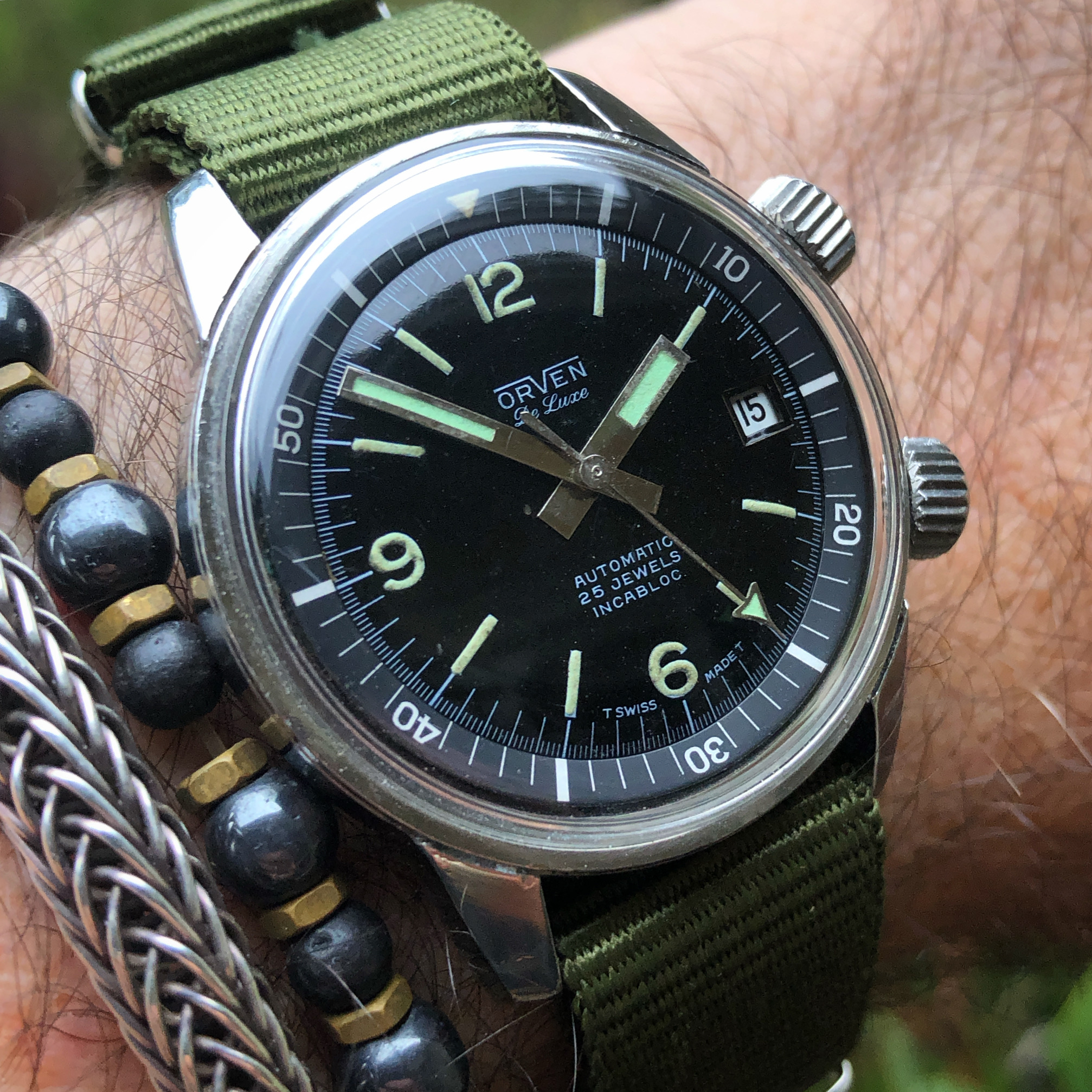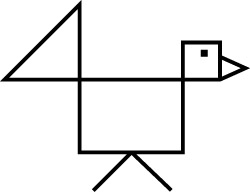In the 1960s, Australian import duties on watches were high, lower on watch parts, this led to a number of companies bringing in cases and movements, assembling and rebranding them. Orven was one such company, based in Melbourne, they predominantly created dress watches for sale through independent jewellers. In much the same way that you can create a Kickstarter brand from a catalogue of parts today, the importers chose a standard range of watches to sell in their local market; in fact the internal pages in the catalogue pictured feature watches with blurred logos so that the same pages could be used by multiple resellers, only the cover pages are branded Orven. One of these watches was the Orven De Luxe Super-Compressor. Anecdotally, many of Orven’s watches were put together by a newly arrived Rolex-trained technician and his family who spent their evenings assembling the watches from the imported parts.
This watch is a bit of a departure from Orven’s usual products, although the basic premise of rebranding an imported watch is the same. “Super-Compressor” refers to a patented case- sealing method by Swiss watch case manufacturer Ervin Piquerez S.A. (EPSA) which used water pressure to compress the casebook onto an o-ring. These high quality EPSA cases were used in dive watches by high end manufacturers including Longines, JLC and Zenith, and many smaller brands such as Droz, Olma, Enicar and Baylor. Each company chose their own combination of hands, bezels, dials and movements, but the case with its signature cross-hatched crowns usually remained unchanged. This 1968 Orven diver is a classic example, with a great choice of dial and hands, powered by an ETA 2472 it measures 36mm. The Orven De Luxe Super-Compressor is hard to find, I’ve only seen another couple of examples online (and an identical Delvina). It is a little smaller than my usual choices, but has great wrist presence and vintage style. It’s a keeper!



Leave a Reply
You must be logged in to post a comment.